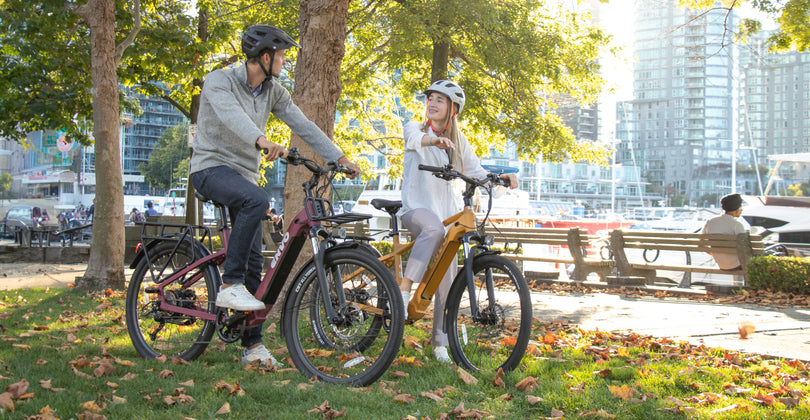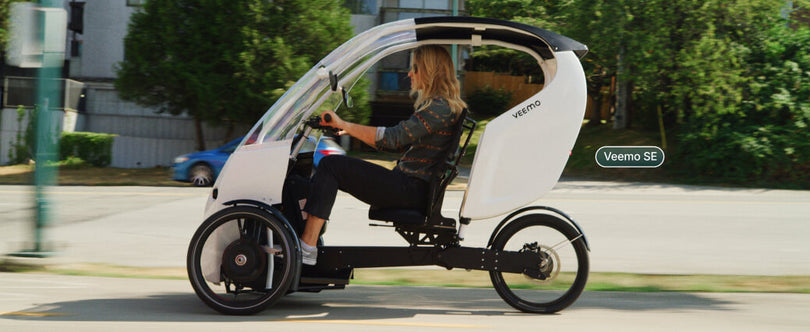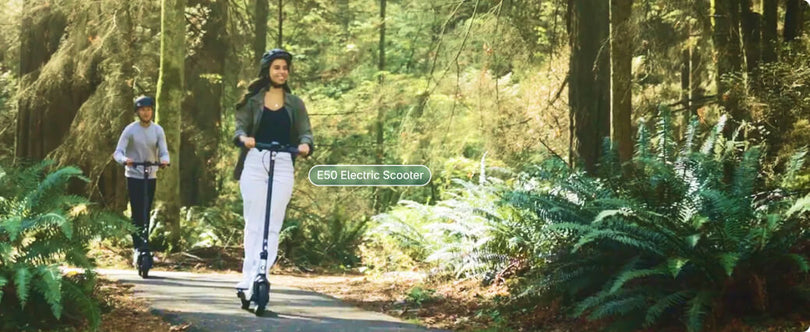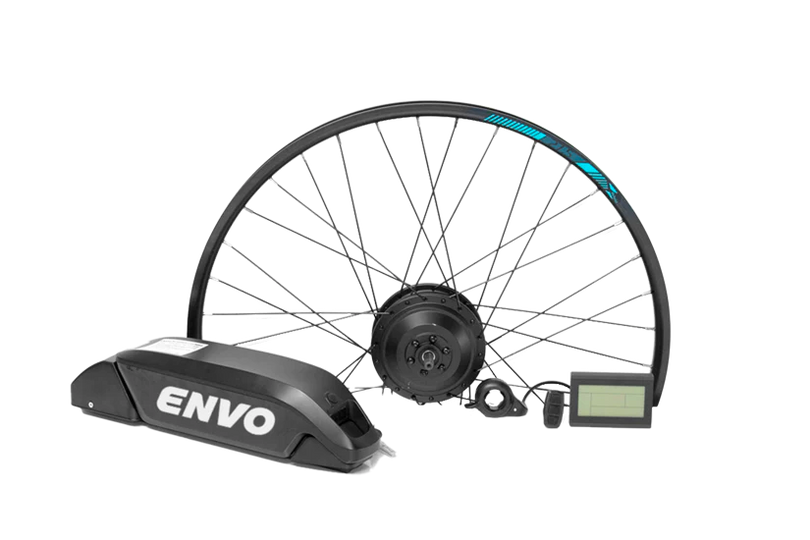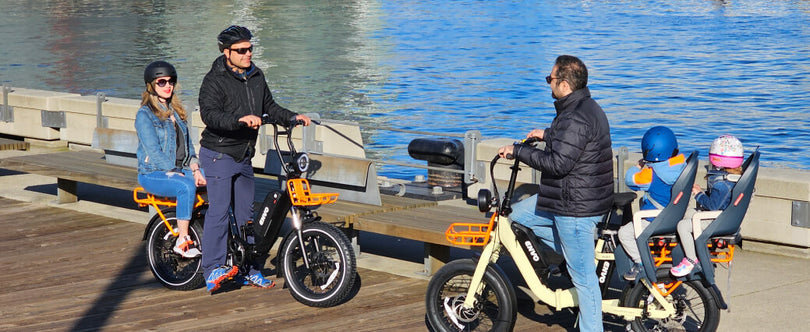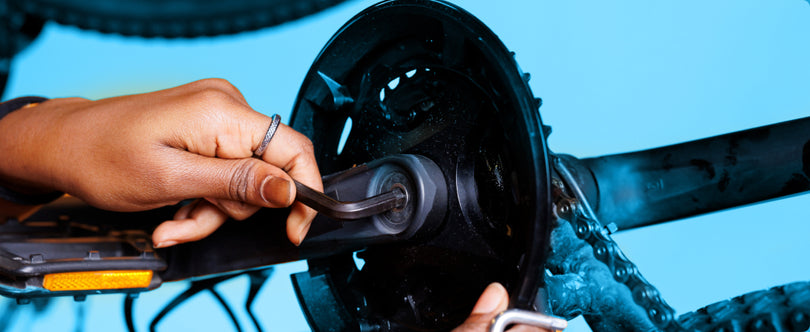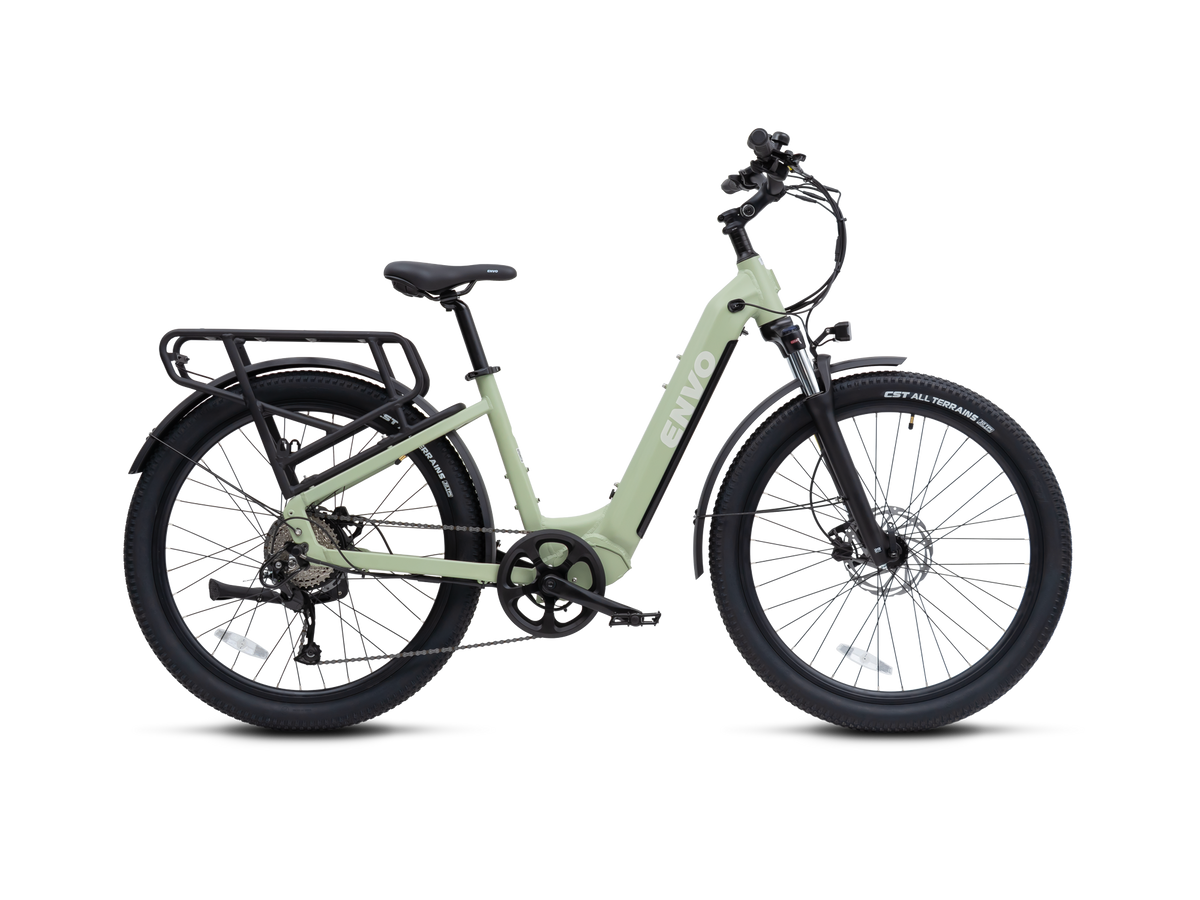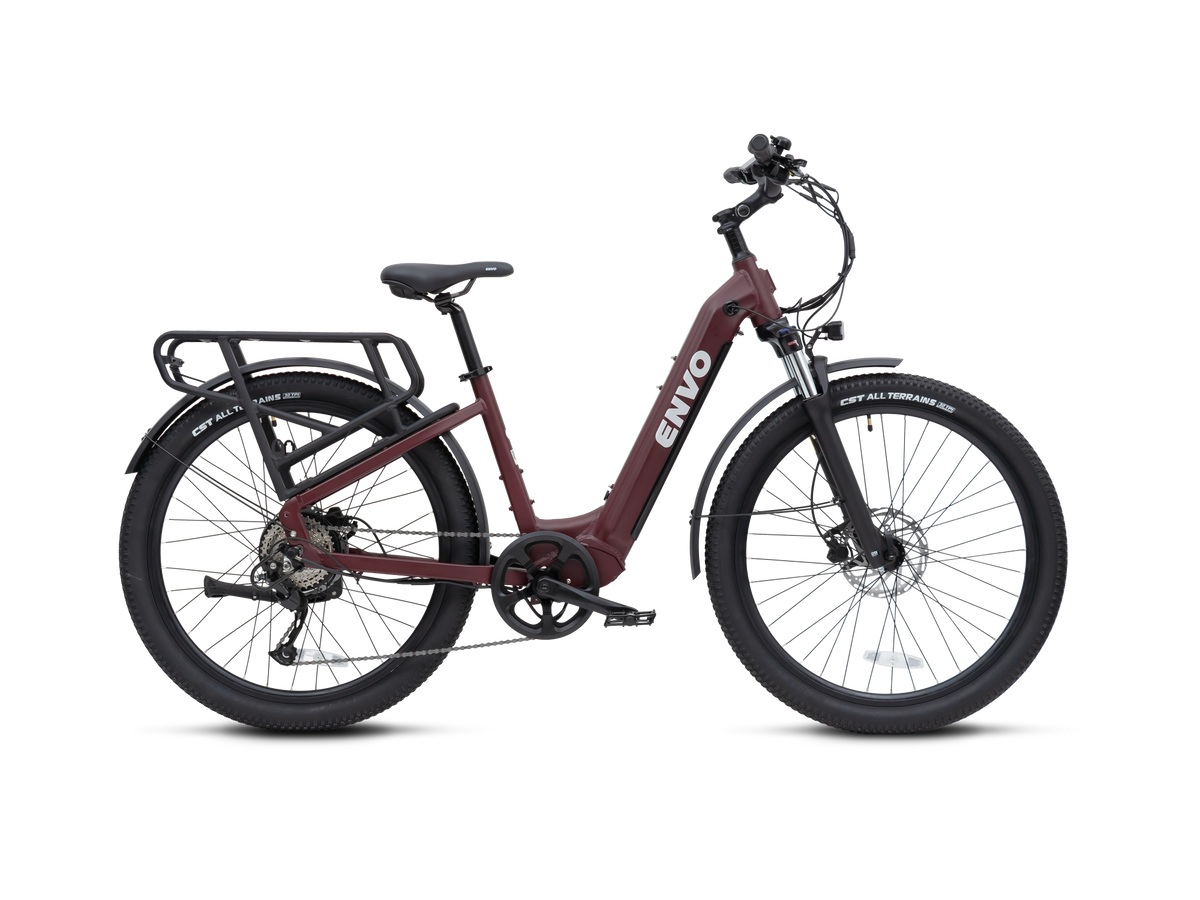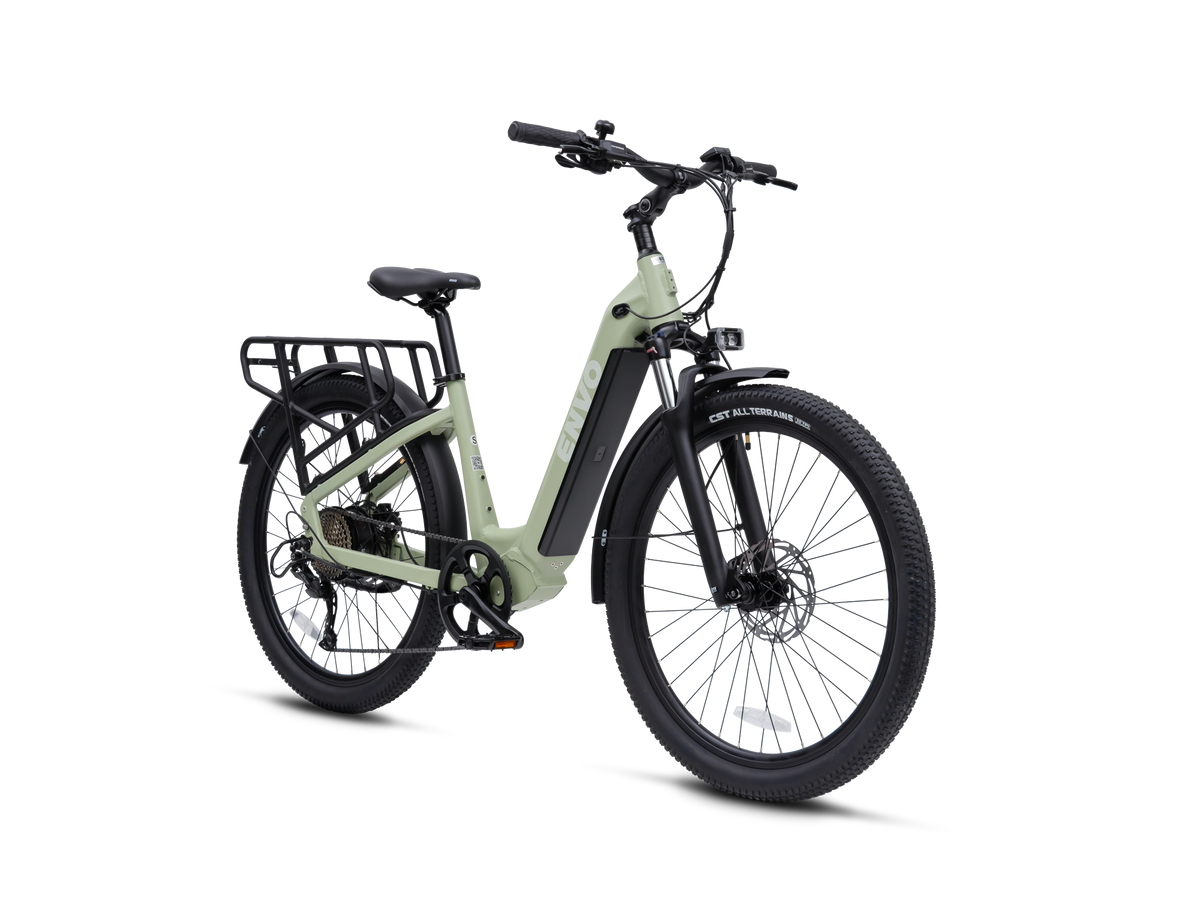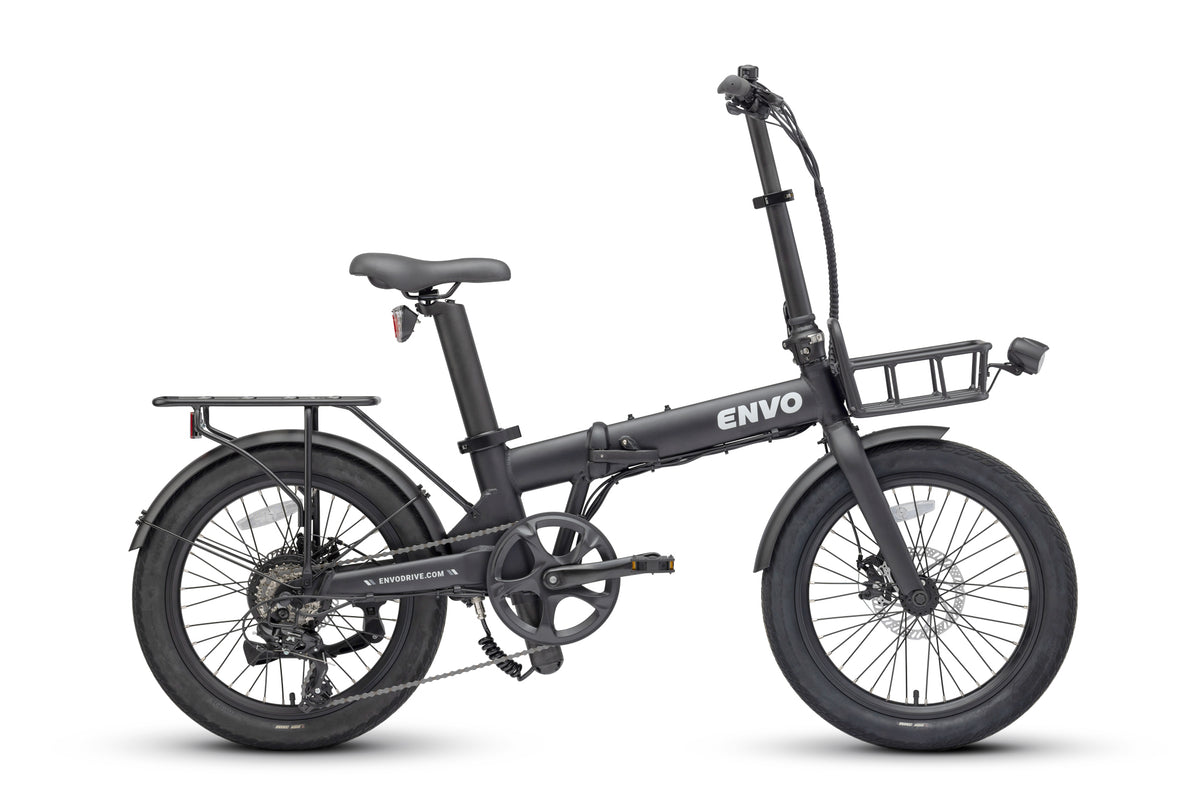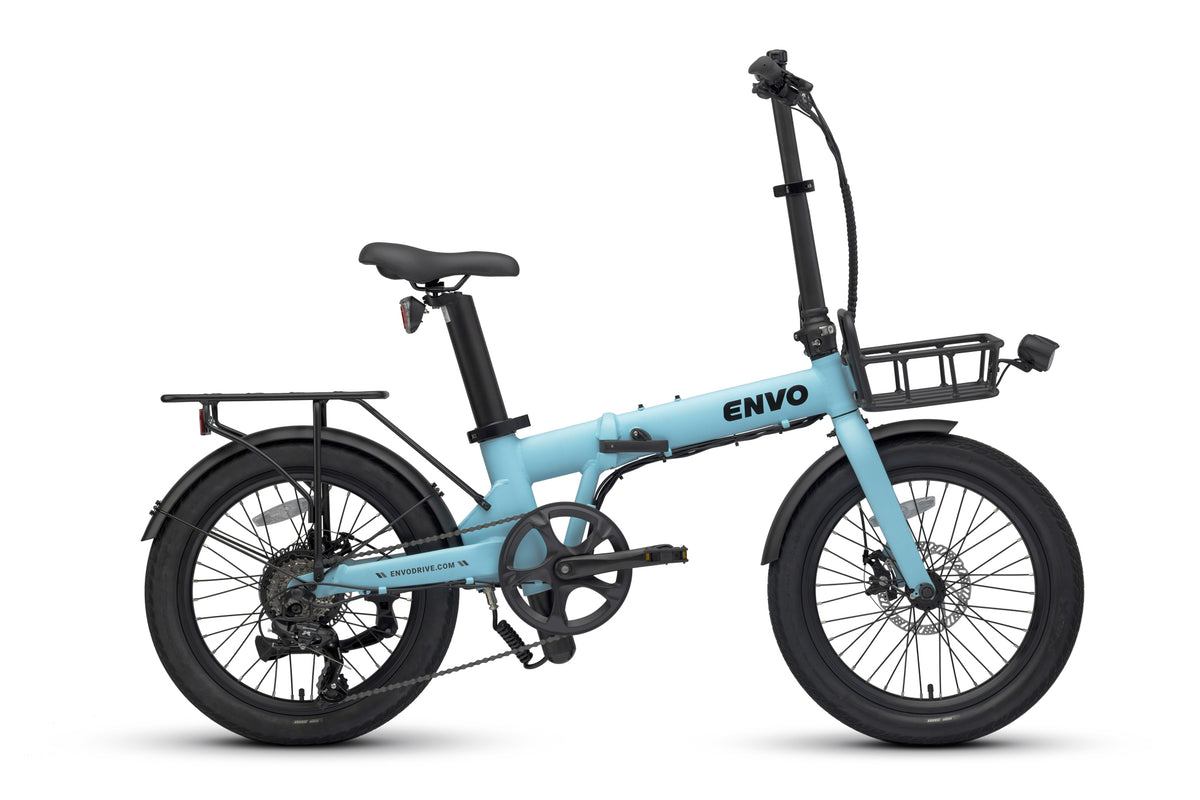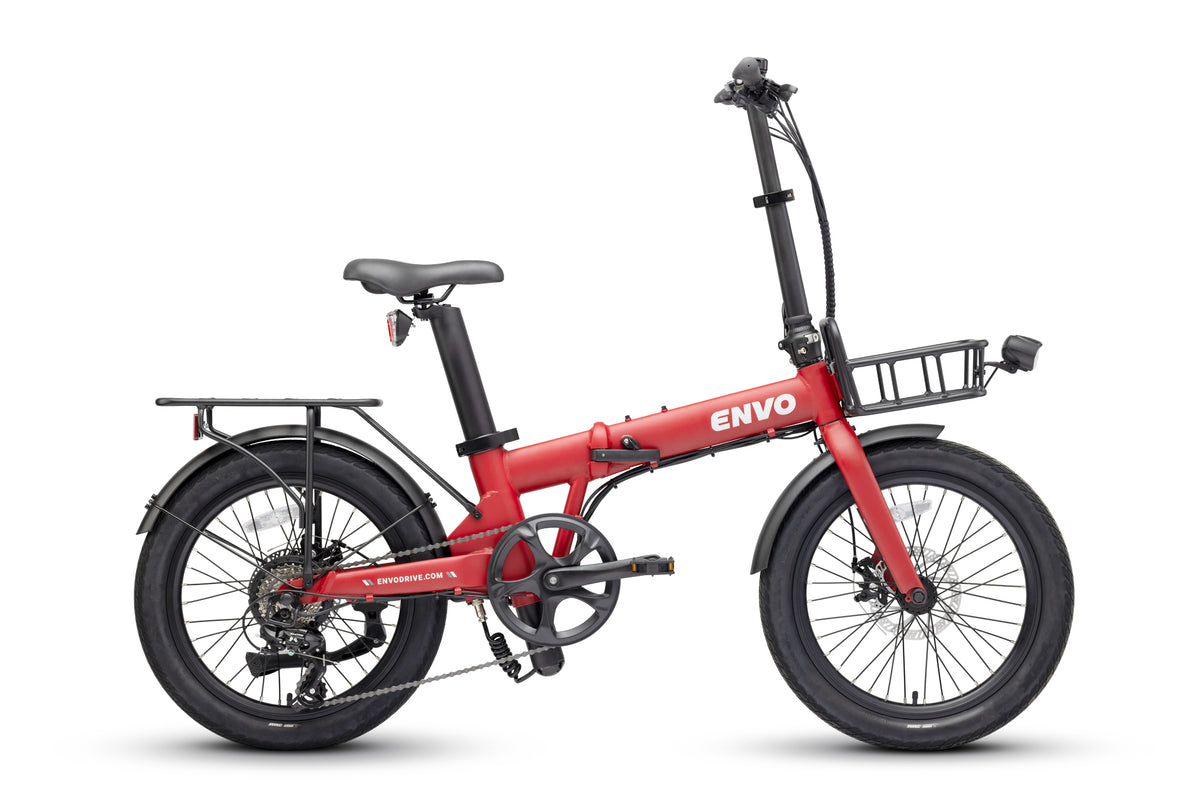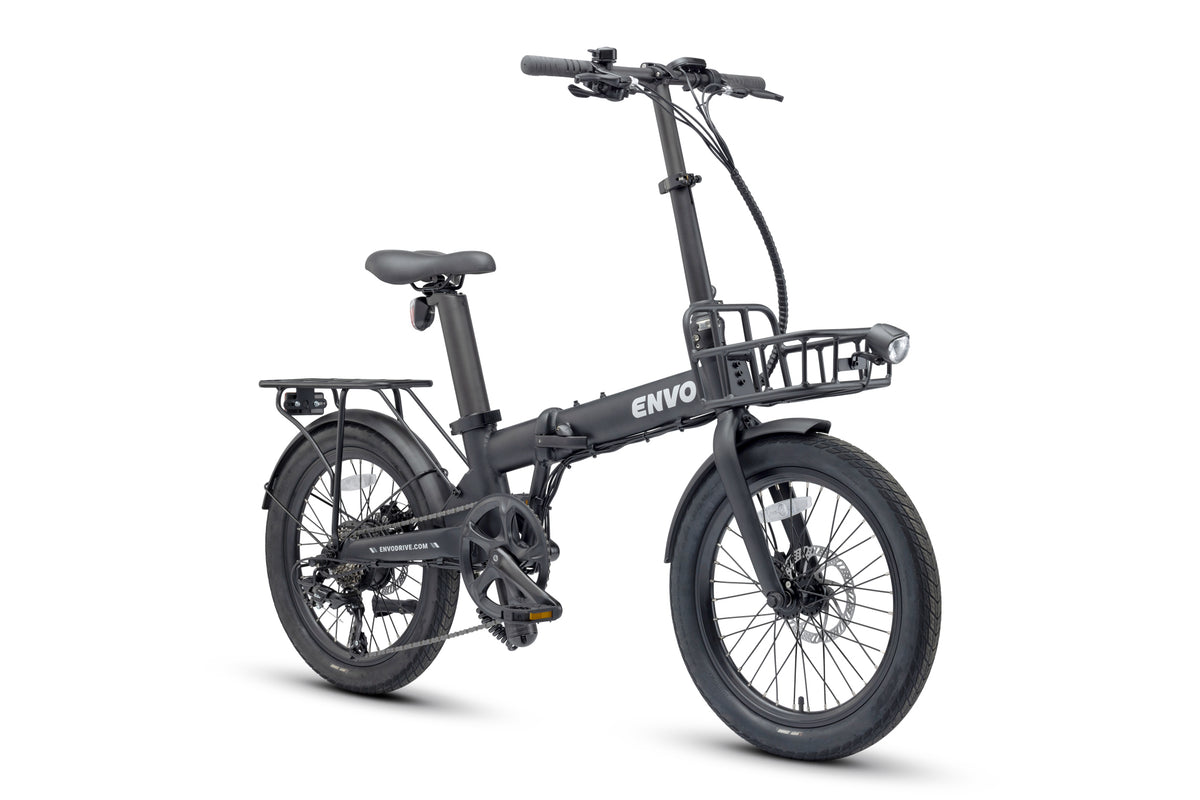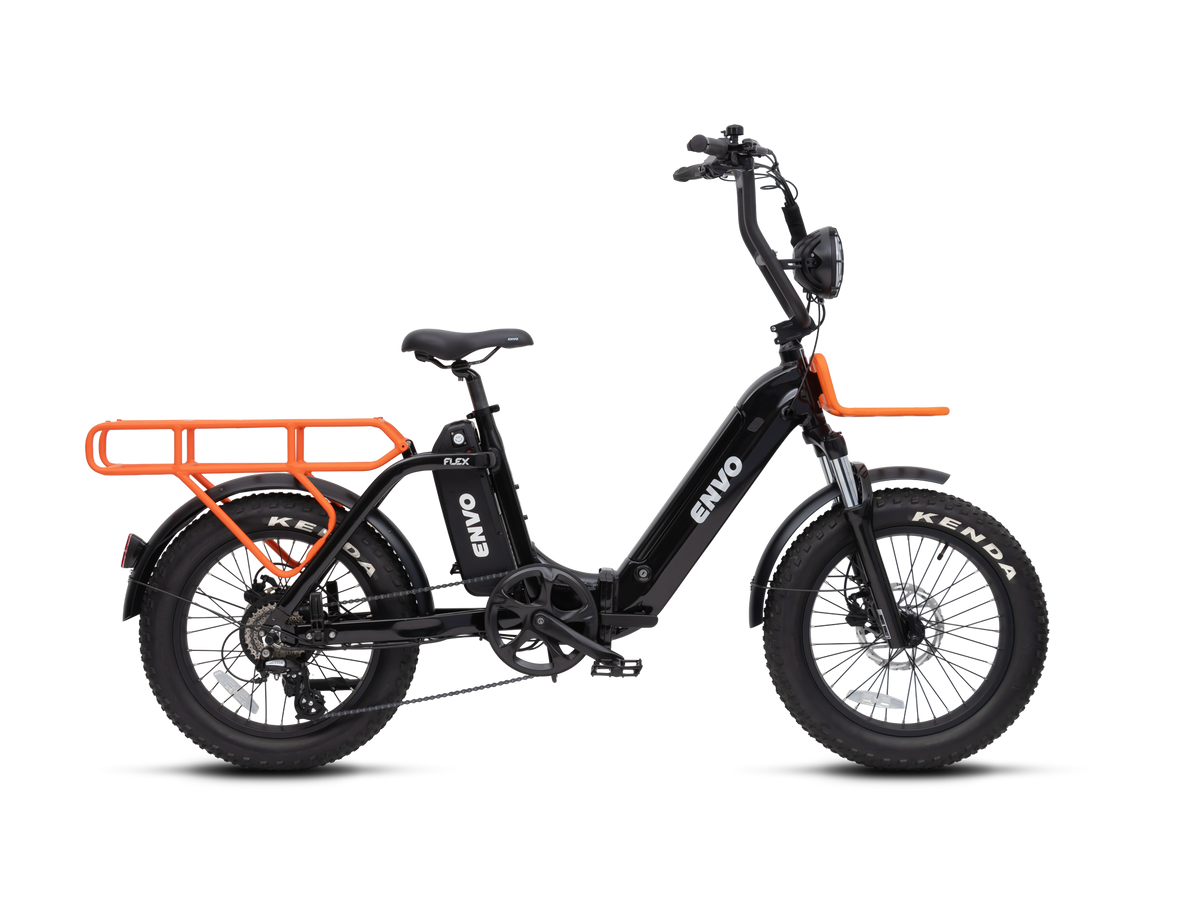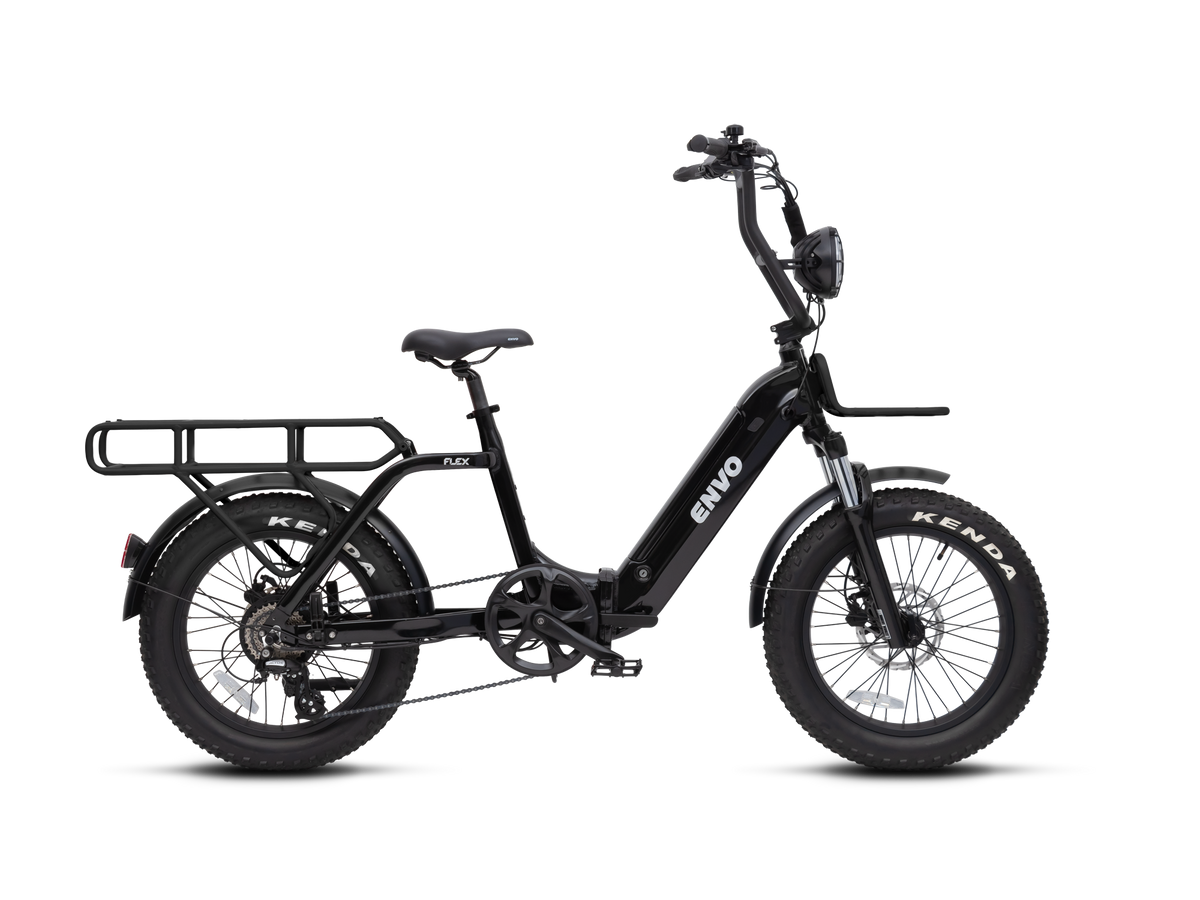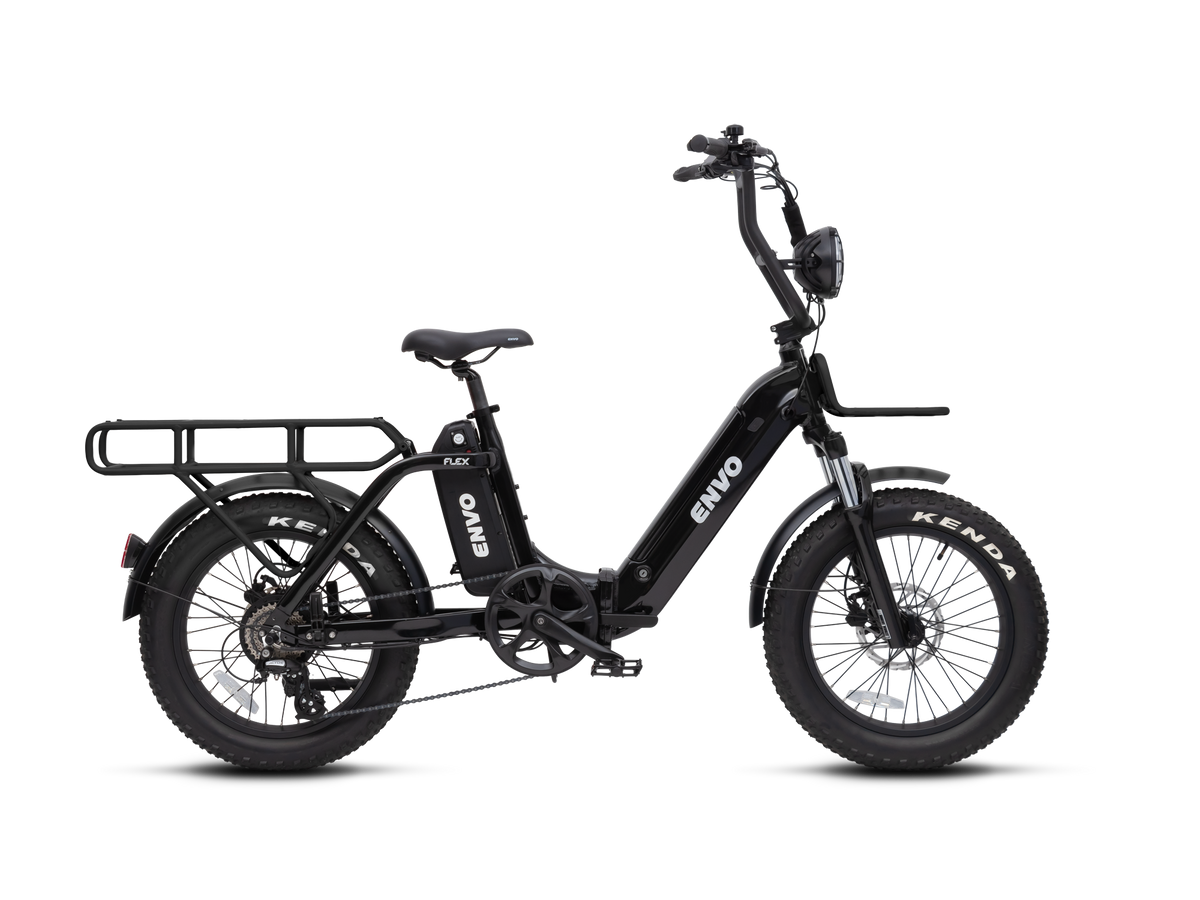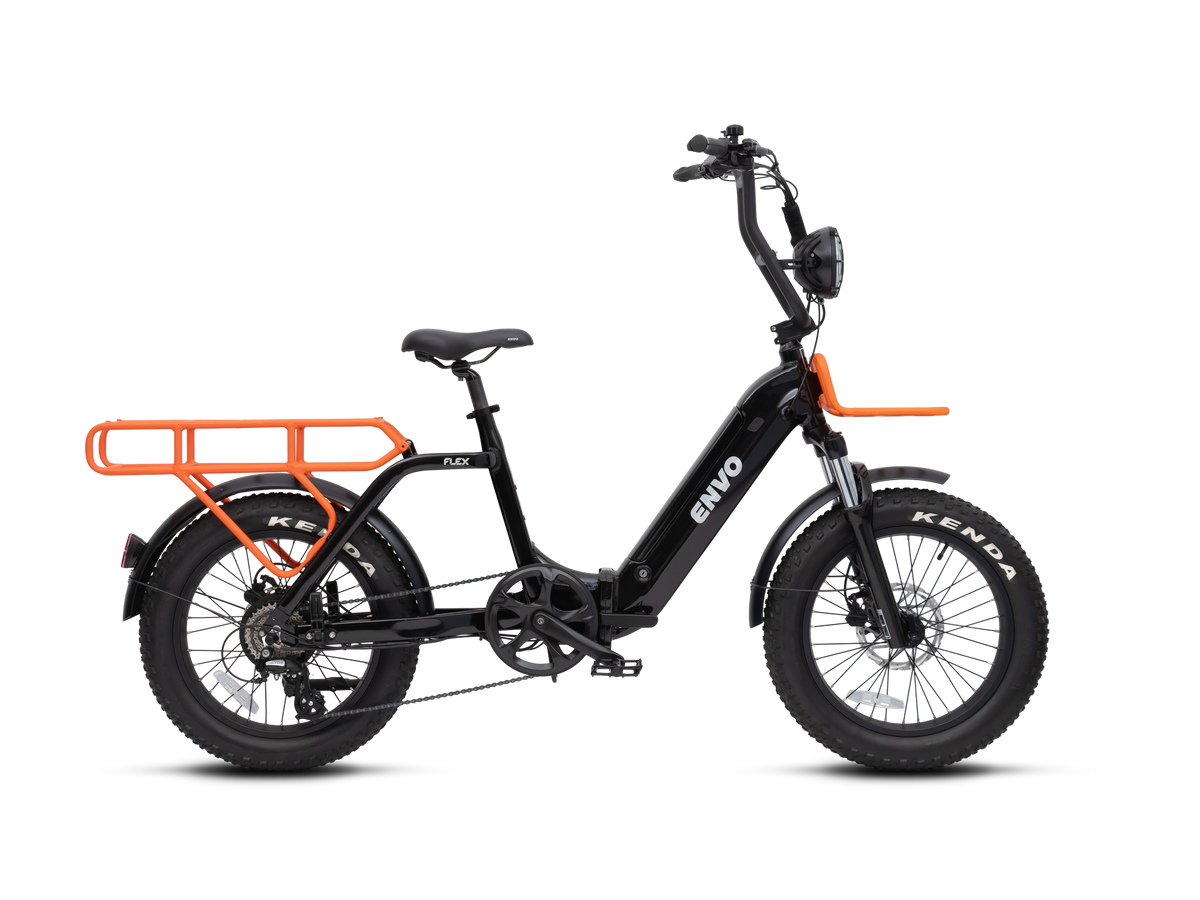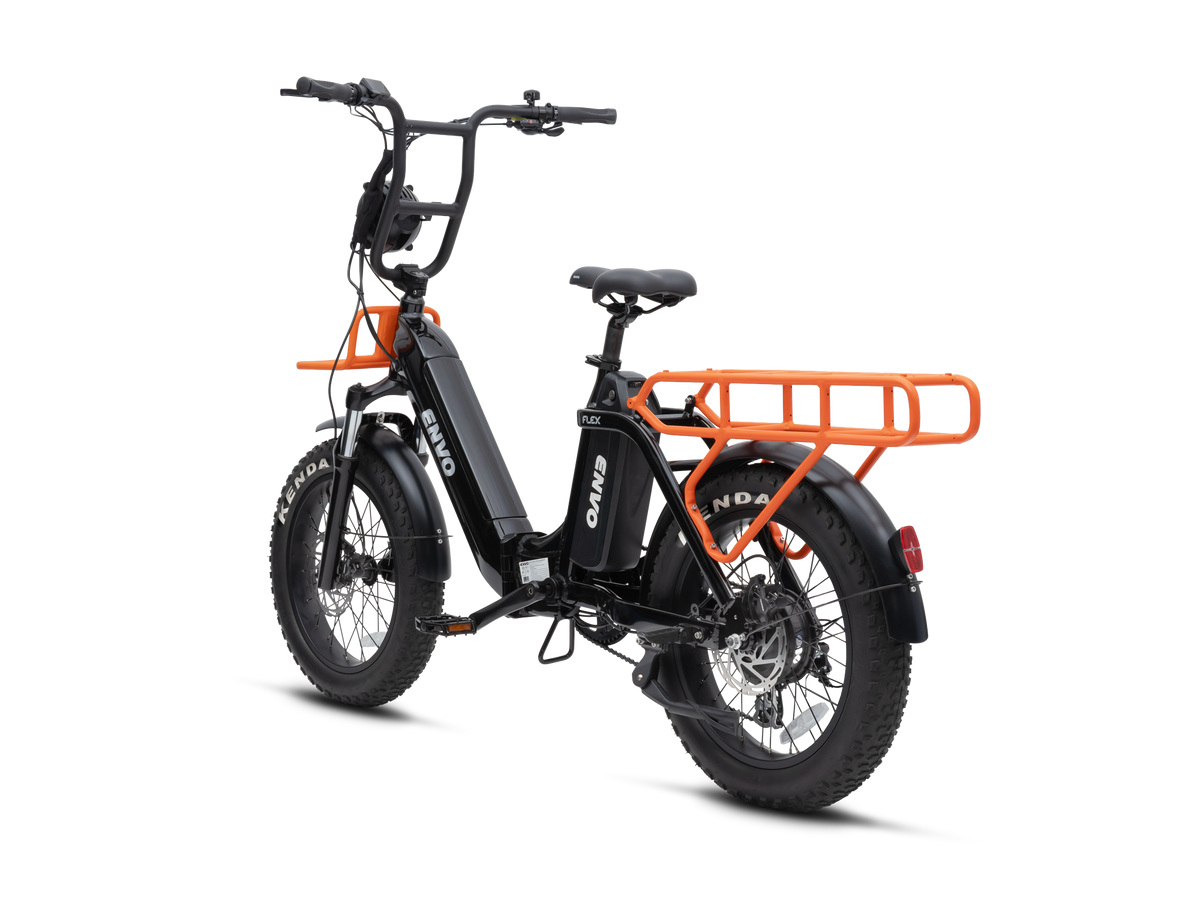The D50 is a rare all-mountain eMTB that utilizes a geared hub motor.
How does the D50 make it possible to use a geared hub motor for mountain biking, when almost all eMTBs use mid-drive motors?
The D50 features a very compact but high-torque motor. Unlike full suspension MTBs, where the motor is not recommended as part of the unsprung mass, the D50 is a hard-tail bike, with the frame and rear hub motor both sprung from the front and unsprung from the rear wheel. The motor is sized small to minimize negative weight effects.
Benefits of the rear geared hub motor compared to mid-drive motors in this product are:
- Lighter weight
- Maintenance-free and more reliable
- Does not stress the chain and transmission
- Lower cost
The only disadvantage of a small geared hub motor for mountain biking is the lack of Torque needed to climb hills. ENVO solved this problem by using a motor-controller system that can output 1200W power and upto 80Nm Torque. This allows a 80kg user to climb a 25% hill using throttle and light pedaling.
While this approach solves the power and Torque demand, it introduced the motor heat description limitations.
The motor is well-protected from overheating by controller temperature monitoring, and power may be adjusted if the temperature reaches safety boundaries. Motor temperature is always visible on the D50 ebike display; you just need to page the screen using the mode button.
The motor will never overheat under high power, even when power limits are fully unlocked. The only scenario in which the motor might overheat is when the bike is running at a very slow speed under high load conditions for longer than 15 minutes. This could occur when the bike tows a heavy trailer up a very steep hill consistently for a long time. In this scenario, once the motor reaches 140°C, the controller starts reducing power, and at 150°C, the controller cuts off power completely. Allowing the motor 2-3 minutes of rest will enable heat dissipation to continue rides. This condition would not occur during normal MTB rides up to 700m elevation gain with full power, as tested on several local BC mountains.

